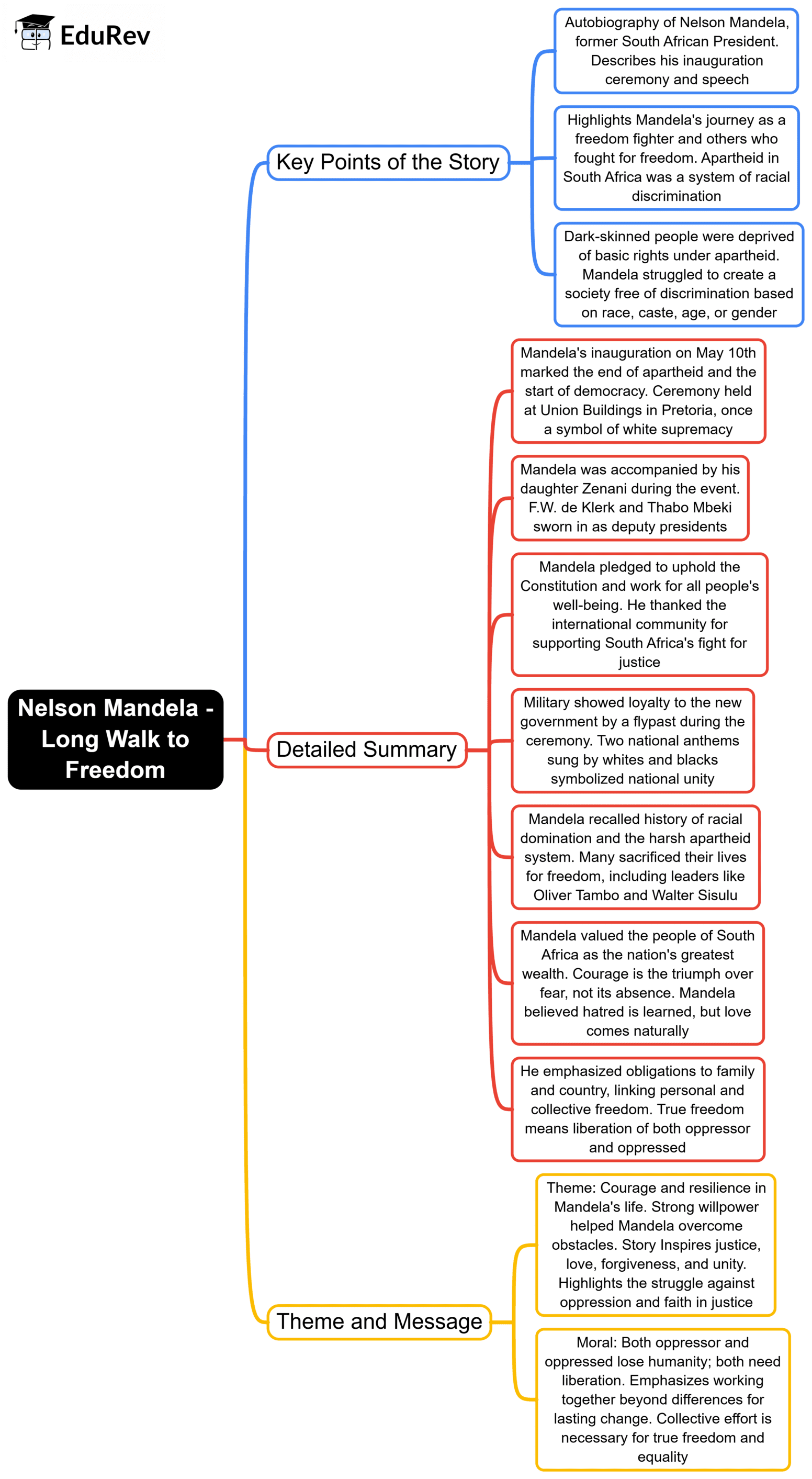Class 10 Exam > Class 10 Notes > English Class 10 > Mind Map: Nelson Mandela - Long Walk to Freedom
Mind Map: Nelson Mandela - Long Walk to Freedom | English Class 10 PDF Download

The document Mind Map: Nelson Mandela - Long Walk to Freedom | English Class 10 is a part of the Class 10 Course English Class 10.
All you need of Class 10 at this link: Class 10
|
61 videos|620 docs|69 tests
|
FAQs on Mind Map: Nelson Mandela - Long Walk to Freedom - English Class 10
| 1. What are the main themes explored in Nelson Mandela's "Long Walk to Freedom"? |  |
Ans. The main themes in "Long Walk to Freedom" include the struggle against apartheid, the importance of resilience and perseverance, the power of forgiveness and reconciliation, and the quest for equality and justice. Mandela emphasizes the significance of personal sacrifice and the collective efforts of people in the fight for freedom.
| 2. How does Nelson Mandela describe his early life in "Long Walk to Freedom"? |  |
Ans. In "Long Walk to Freedom," Nelson Mandela describes his early life growing up in the rural village of Mvezo in the Eastern Cape. He talks about his family background, including his father’s role as a chief, and the traditional customs of the Xhosa people. Mandela reflects on his education and the influence of his early experiences on his later political activism.
| 3. What role did imprisonment play in Nelson Mandela's life and political journey? |  |
Ans. Imprisonment played a crucial role in Nelson Mandela's life and political journey as it became a transformative experience. While incarcerated for 27 years, Mandela deepened his understanding of the struggle against apartheid and emerged as a powerful symbol of resistance. His time in prison also allowed him to reflect on his beliefs and strategies, ultimately leading to a focus on negotiation and reconciliation when he was released.
| 4. How did Nelson Mandela's leadership style evolve throughout his life as described in "Long Walk to Freedom"? |  |
Ans. Nelson Mandela's leadership style evolved from being a militant activist in his youth to a more diplomatic and reconciliatory leader later in life. Initially, he believed in armed struggle against apartheid, but over time, he recognized the importance of negotiation and dialogue. His leadership during the transition to democracy in South Africa showcased his ability to unite people and promote peace, emphasizing collaboration over conflict.
| 5. What impact did "Long Walk to Freedom" have on global perceptions of Nelson Mandela? |  |
Ans. "Long Walk to Freedom" significantly impacted global perceptions of Nelson Mandela by humanizing him as a leader and highlighting his commitment to justice and equality. The autobiography provided insight into his personal sacrifices and the broader struggle against apartheid, garnering international sympathy and support for his cause. It solidified Mandela's legacy as a global icon for peace and human rights.
Related Searches

















